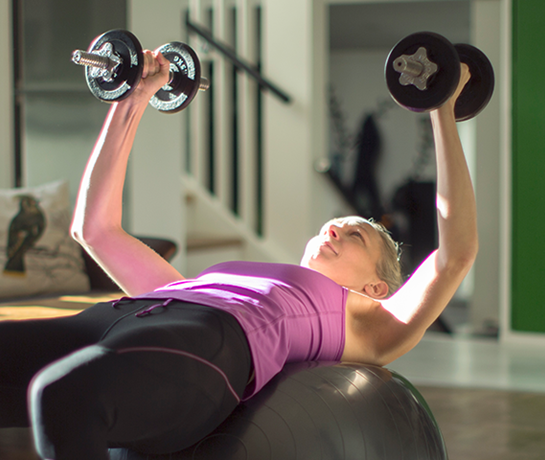

The choices we make throughout our lives have a significant impact on how our bodies develop. Understanding the risk factors that can reduce muscle and bone growth can help us reduce the chance of disease and injuries to our musculoskeletal system. In each phase of our lives (early, mid, older), we have an opportunity to maximize, maintain, and reduce the decline of muscle mass and bone density.
Early life
From birth to around age 30 is your opportunity to maximize your muscle mass and bone growth.
Mid-adult life
After age 30, most adults begin to lose muscle mass. It is important to maintain muscle gains made during early life, decreasing the risk of injuries and diseases.
Older adult life
As we age, muscle mass and bone strength begin to decline, with rapid decline after age 80. During this phase, physical limitations due to injury or disease are likely without interventions to reduce risk.
Interventions
- Nutrition: Eat a healthy variety of protein choices, fruit, vegetables, nuts, and whole grains along with adequate calcium intake to keep joints well-protected and bones strong.
- Physical activity: Participation in aerobic and muscle-strengthening physical activity improves pain management, function, and quality of life.
- Aerobic activity: (brisk walking, running, biking, swimming, etc.)—150 minutes of moderate-intense activity per week
- Moderate intensity means being able to able to talk, but not sing.
- Muscle-strengthening activity: (resistance bands, body weight exercises, weightlifting, etc.)—two-plus days per week of focusing on each major muscle group: chest, back, arms, legs, and core
- Aerobic activity: (brisk walking, running, biking, swimming, etc.)—150 minutes of moderate-intense activity per week

For more information on muscle, bone, and joint health, email contactknovasolutions@workpartners.com or call 1-800-355-0885. We are available Monday through Thursday from 8 a.m. to 8 p.m. and Friday from 8 a.m. to 5 p.m.
Sources:
- Azzolino D, Spolidoro GCI, Saporiti E, et al. Musculoskeletal Changes Across the Lifespan: Nutrition and the Life-Course Approach to Prevention. Front Med (Lausanne). 2021;8:697954. Published 2021 Aug. 31. doi:10.3389/fmed.2021.697954
- Cruz-Jentoft AJ, Bahat G, Bauer J, et al. Sarcopenia: revised European consensus on definition and diagnosis [published correction appears in Age Ageing. 2019 July 1;48(4):601]. Age Ageing. 2019;48(1):16-31. doi:10.1093/ ageing/afy169
- Sarcopenia With Aging. WebMD. Published 2021. Accessed Sept. 9, 2022. webmd.com/healthy-aging/ guide/sarcopenia-with-aging
- U.S. Department of Health and Human Services. Physical Activity Guidelines for Americans, 2nd edition. Washington, DC: U.S. Department of Health and Human Services; 2018.
- Does Osteoporosis Run in Your Family? Centers for Disease Control and Prevention. Published May 20, 2022. Accessed Sept. 9, 2022. cdc.gov/genomics/disease/osteoporosis. htmCDC_AA_refVal=https%3A%2F%2Fwww.cdc. gov%2Ffeatures%2Fosteoporosis%2Findex.html





